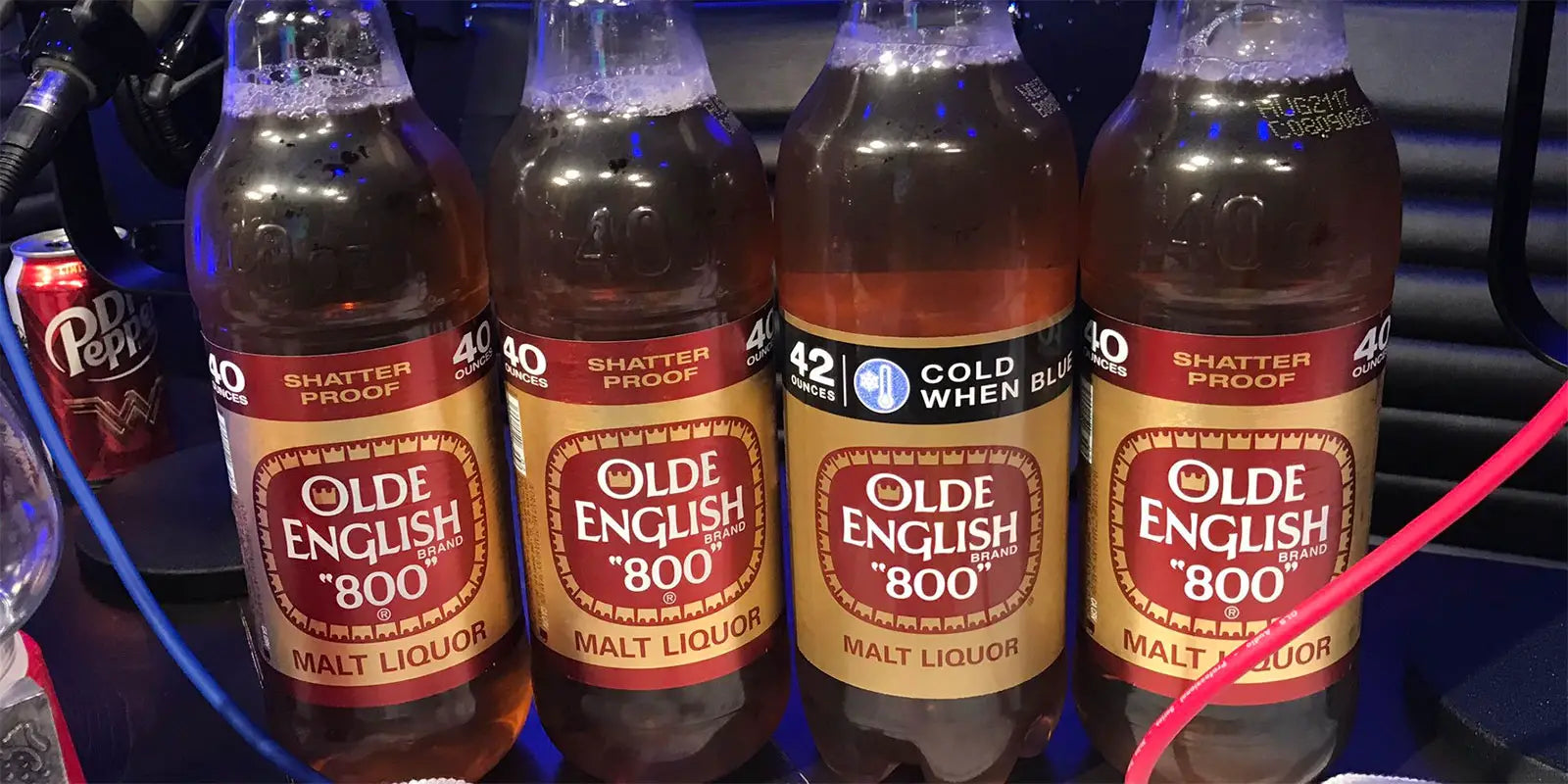What is Malt Liquor?
February 29 2024

Introduction
What exactly is this beverage that has carved out such a distinct niche within the alcohol industry? This blog post aims to demystify malt liquor, exploring its origins, how it's made, its characteristics, cultural impact, and the controversies surrounding it. Whether you're a casual drinker curious about different alcoholic beverages or a seasoned enthusiast looking to deepen your understanding, this post will provide you with a comprehensive overview of malt liquor, setting the record straight on its unique place in the world of drinks.

The Basics of Malt Liquor
What is Malt Liquor?
It is a type of alcoholic beverage made from malted barley and traditionally has a higher alcohol content than standard beer. The term "malt liquor" primarily refers to this higher alcohol content, distinguishing it from other beers on the market.
Historical Background and Origins
The origins of malt liquor can be traced back to the mid-20th century in the United States, designed to provide a stronger and cheaper alternative to the average beer. It was marketed towards a broader audience, aiming to capture those looking for high alcohol content without the high price tag.
Malt Liquor vs. Beer
While both malt liquor and beer are brewed from malted barley, the key difference lies in their alcohol content and the brewing process. Malt liquor often undergoes a different fermentation process, allowing it to achieve a higher alcohol by volume (ABV) percentage, typically ranging from 6% to 9%, though some brands can exceed this range.
How Malt Liquor is Made
Its distinctive characteristics stem from its unique production process, which differentiates it from traditional beer. Understanding this process sheds light on why malt liquor possesses a higher alcohol content and particular flavor profile.
Ingredients Used in Malt Liquor
The primary ingredients are similar to those in beer: water, malted barley, hops, and yeast. However, malt liquors often incorporate additional sugars or adjuncts like corn, rice, or dextrose. These adjuncts are not typically used for flavor but rather for their fermentable sugars, which contribute to the beverage's higher alcohol content without significantly increasing production costs.
The Brewing Process
The brewing process for is akin to that of beer but with a few key differences that are pivotal in defining its character:
-
Mashing: The process begins with mashing, where malted barley is mixed with hot water to activate enzymes that break down starches into fermentable sugars. For malt liquor, this stage is crucial as it prepares the base that will be further enriched with additional sugars or adjuncts.
-
Boiling and Hopping: The mash is then boiled, and hops are added. While hops are essential for adding bitterness to balance the sweetness of the malt, malt liquors typically have a lower hop content than beers, focusing instead on achieving a higher alcohol content and a sweeter, less bitter flavor profile.
-
Fermentation: After boiling, the wort (the liquid extracted from the mashing process) is cooled and transferred to fermenters, where yeast is added. It is during this stage that the distinctiveness comes to the forefront. The fermentation process is often extended, allowing the yeast to convert more sugars into alcohol, resulting in a higher ABV. The types of yeast used can also differ, with some strains being more efficient at converting sugars to alcohol at higher concentrations.
-
Conditioning and Filtering: Post-fermentation, the malt liquor is conditioned, which can take longer than traditional beers to achieve the desired smoothness and alcohol content. Finally, it's filtered to remove any solids and yeast, leaving behind a clear, potent beverage.
Key Differences in Production from Traditional Beers
The most notable differences in production include the use of additional sugars or adjuncts, a potentially longer and differently managed fermentation process to boost alcohol content, and a focus on cost-efficiency without sacrificing potency. These steps contribute to malt liquor's unique profile and appeal, distinguishing it from its beer counterparts.
Characteristics
Malt liquor is not just defined by its production process but also by its distinct characteristics, which range from its alcohol content to its flavor profile. These attributes have helped carve out a niche within the alcoholic beverage market.
Alcohol Content-Range
One of the most defining characteristics is its alcohol by volume (ABV) content, which typically ranges from 6% to 9%, although some brands may exceed this, reaching up to 12% or more. This higher alcohol content differentiates malt liquor from standard beers, which usually hover around 4% to 6% ABV. The appeal of malt liquor to many consumers lies in this potency, offering a stronger effect in a single serving.
Flavor Profiles
It is known for its distinct flavor profile, which tends to be sweeter and less hoppy than traditional beers. The adjuncts used in brewing, such as corn and rice, contribute to this sweetness, as does the lower hop content, which reduces the bitterness. However, the flavor can vary significantly between brands, with some offering more complex notes and others focusing on a straightforward, strong, and sweet taste.
Varieties and brands often experiment with the balance between sweetness and alcohol sharpness, aiming to appeal to a broad audience. The result is a range of malt liquors that can offer everything from a smooth, mild experience to a robust, bold flavor, catering to different preferences.
Varieties and Brands
The malt liquor market includes a wide variety of brands, each with its unique take on the beverage. Popular brands like Colt 45, Olde English 800, and Mickey’s Fine Malt Liquor have become synonymous with the category, each offering different ABV levels and flavor nuances. Some brands have also introduced flavored malt liquors, incorporating fruits and other natural flavors to broaden their appeal.
The diversity among malt liquor brands reflects the beverage's adaptability and its ability to cater to various tastes and preferences. Whether consumers are looking for a classic experience or something more modern and flavored, the market offers an array of choices.
Malt Liquor in Culture
Malt liquor has occupied a unique place in American culture, often associated with specific demographics and lifestyles due to targeted marketing strategies in the 1970s and 1980s. This beverage has been both celebrated and criticized, reflecting broader societal issues and attitudes.
Role and Perception in Popular Culture
Malt liquor has been prominently featured in hip-hop and rap culture, with numerous references in songs and music videos that highlight its popularity within these communities. This association has contributed to its identity as a symbol of rebellion and resilience, though it has also led to stereotypes and debates about the targeting of minority communities by alcohol advertisers.
Notable endorsements by celebrities and musicians have further solidified its status in popular culture, making it more than just a beverage but a cultural icon. However, this prominence comes with its controversies, including discussions about responsible consumption and the ethical implications of marketing alcoholic beverages to vulnerable communities.
Evolution of Its Image
Over time, the image of malt liquor has evolved. While it retains its strong association with certain music and cultural scenes, there's been a growing appreciation of malt liquor among a broader audience, intrigued by its history and unique taste profile. Craft breweries have even begun experimenting with malt liquor styles, aiming to elevate its reputation by focusing on quality and craftsmanship.
Consumption and Controversies
Malt liquor's consumption patterns reveal much about its place in society, while the controversies surrounding it highlight the complexities of alcohol marketing and consumption.
How and When It's Typically Consumed
Malt liquor is often consumed in social settings, from parties and concerts to casual gatherings, appealing to those seeking a high-alcohol option at a low cost. Its packaging, typically in larger bottles or "forties," has become iconic, further influencing how and where malt liquor is enjoyed.
Health Considerations and Controversies
The higher alcohol content of malt liquor raises health concerns, particularly regarding binge drinking and alcohol dependency. Critics argue that affordability and marketing strategies contribute to these issues, especially in economically disadvantaged areas.
Legal and societal issues stem from these health concerns, with calls for stricter regulations on alcohol advertising and the sale of high-alcohol beverages. The debate over malt liquor underscores the need for a balanced approach to alcohol consumption that considers both individual freedom and community health.
Conclusion
It is more than just a type of alcoholic beverage; it's a cultural phenomenon that has sparked discussions, debates, and changes in the alcohol industry. From its unique production process and characteristics to its role in popular culture and the controversies it has faced, its story is a fascinating reflection of societal attitudes towards alcohol.
As it continues to evolve, it remains a symbol of both tradition and rebellion, offering a window into the complexities of cultural identity, marketing ethics, and public health. Whether seen as a simple drink or a cultural icon, malt liquor's impact on society is undeniable, making it a topic worth exploring for anyone interested in the intersections of culture, commerce, and community.

1 comment
terrible AI article, couldn’t even pay an minimum wage intern to write something based on a wikipedia page